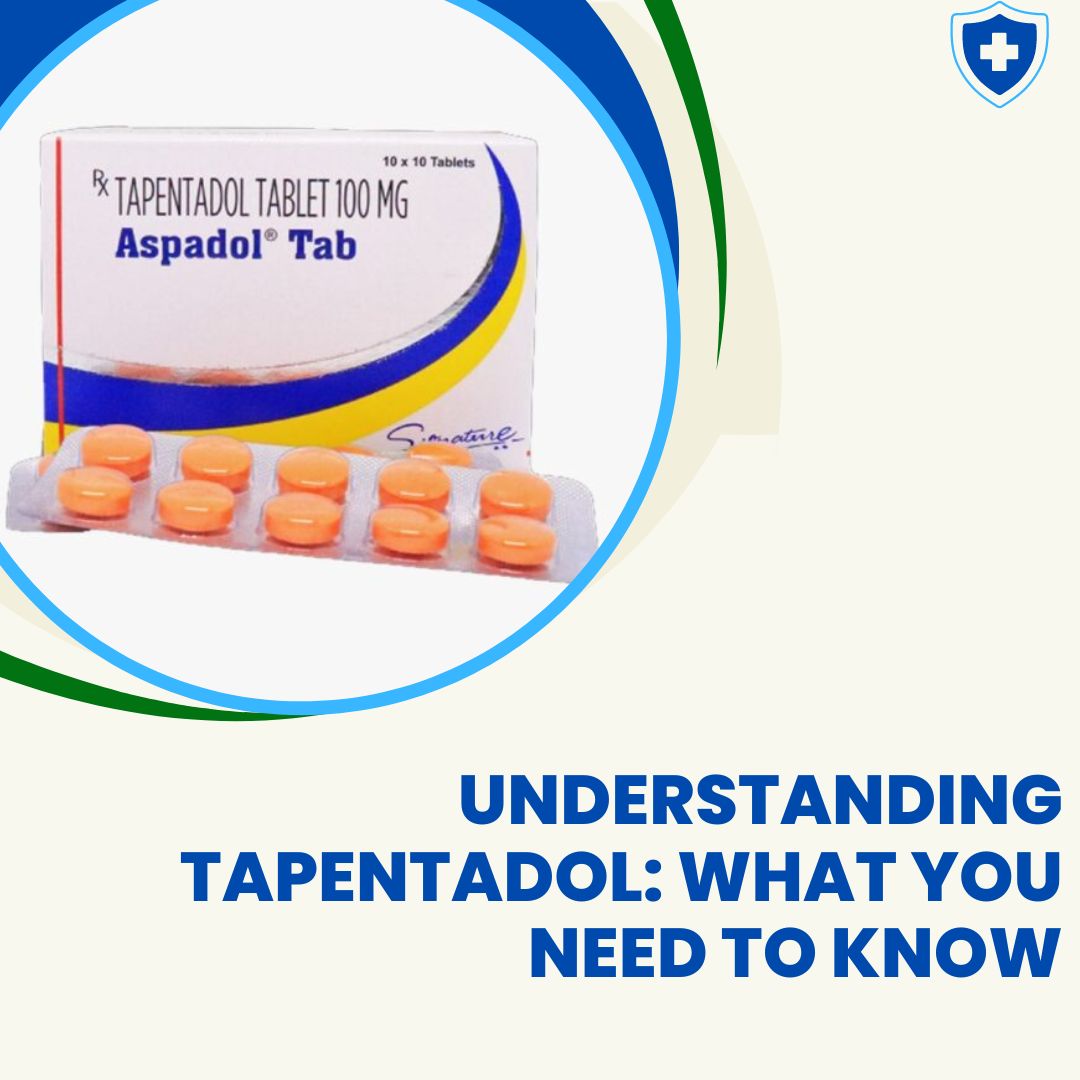Tapentadol is a medication that is often prescribed to help manage pain. If you’ve been recommended or are considering taking this drug, it’s important to understand what it is, how it works, when it should be used, and what potential side effects or risks might come with it. In this article, we’ll cover everything you need to know about Tapentadol in simple terms, so it’s easy for everyone to understand.
What is Tapentadol?
A Brief Overview of Tapentadol
Tapentadol is a type of pain reliever that is often prescribed to people who are dealing with moderate to severe pain. It is an opioid analgesic, which means it works by changing the way your brain and nervous system respond to pain. Unlike some other pain medications, Tapentadol has a dual mechanism of action. This means it works in two different ways to help manage pain.
How Tapentadol Works in the Body
Tapentadol works by binding to certain receptors in the brain, specifically the mu-opioid receptors. When it binds to these receptors, it helps to block the pain signals that are being sent to the brain, which in turn reduces the sensation of pain. Additionally, Tapentadol inhibits the reuptake of norepinephrine, a chemical in the brain that plays a role in how pain is perceived. By increasing the levels of norepinephrine, Tapentadol further helps in reducing the pain.
When Should Tapentadol Be Used?
Conditions Treated by Tapentadol
Tapentadol is commonly prescribed for the treatment of moderate to severe pain that cannot be managed by other pain relievers like ibuprofen or acetaminophen. It is particularly useful for managing pain related to injuries, surgeries, or chronic conditions like arthritis or nerve pain.
Who Can Take Tapentadol?
Tapentadol is usually prescribed to adults. It is not typically recommended for children or teenagers. Before starting Tapentadol, it’s important to inform your doctor about any other medications you are taking, as well as any medical conditions you have. This is because Tapentadol can interact with other drugs and may not be suitable for people with certain health conditions.
How to Take Tapentadol Safely
Tapentadol is typically taken by mouth, in the form of a tablet. It is important to take Tapentadol exactly as prescribed by your doctor. Do not take more than the recommended dose, and do not take it more frequently than directed. Taking too much Tapentadol can lead to serious side effects, including overdose.
What Are the Side Effects of Tapentadol?
Common Side Effects
Like all medications, Tapentadol can cause side effects. Some of the most common side effects include:
- Dizziness: Feeling lightheaded or unsteady.
- Drowsiness: Feeling unusually sleepy or tired.
- Nausea: Feeling sick to your stomach.
- Constipation: Difficulty in passing stool.
These side effects are usually mild and tend to go away on their own after a few days. However, if they persist or become bothersome, it’s important to talk to your doctor.
Serious Side Effects
In some cases, Tapentadol can cause more serious side effects. These can include:
- Respiratory Depression: This is a serious condition where breathing becomes slow and shallow. It can be life-threatening and requires immediate medical attention.
- Low Blood Pressure: Tapentadol can sometimes cause a significant drop in blood pressure, leading to symptoms like dizziness, fainting, or lightheadedness.
- Allergic Reactions: Some people may experience an allergic reaction to Tapentadol, which can cause symptoms like rash, itching, swelling, severe dizziness, or trouble breathing.
If you experience any of these serious side effects, you should seek medical help right away.
Things You Should Know Before Taking Tapentadol
Interactions with Other Medications
Tapentadol can interact with other medications, which can increase the risk of side effects or reduce the effectiveness of the drug. Some of the medications that can interact with Tapentadol include:
- Other Opioid Pain Relievers: Taking Tapentadol with other opioids can increase the risk of side effects like respiratory depression.
- Sedatives or Tranquilizers: These can enhance the drowsiness caused by Tapentadol, leading to dangerous levels of sedation.
- Antidepressants: Some types of antidepressants can interact with Tapentadol, leading to an increased risk of serotonin syndrome, a potentially life-threatening condition.
Tapentadol and Alcohol
It is important to avoid drinking alcohol while taking Tapentadol. Alcohol can increase the sedative effects of Tapentadol, leading to dangerous levels of drowsiness, dizziness, and even respiratory depression. Combining alcohol with Tapentadol can also increase the risk of overdose.
Tapentadol and Pregnancy
Tapentadol is not usually recommended during pregnancy unless absolutely necessary. It can cross the placenta and may affect the developing baby. If you are pregnant or planning to become pregnant, it’s important to discuss the risks and benefits of taking Tapentadol with your doctor.
Purpose of Tapentadol: Managing Pain Effectively
Why Tapentadol is Prescribed
The primary purpose of Tapentadol is to provide relief from moderate to severe pain. It is often prescribed when other pain relievers are not effective or suitable. Tapentadol is particularly useful for managing pain that is both acute (short-term) and chronic (long-term).
Benefits of Using Tapentadol
One of the main benefits of Tapentadol is its dual mechanism of action. By targeting both the opioid receptors and norepinephrine reuptake, Tapentadol offers a broader approach to pain management. This can make it more effective for certain types of pain compared to other pain relievers.
Another benefit is that Tapentadol is available in both immediate-release and extended-release forms. The immediate-release form works quickly to relieve pain, making it ideal for sudden or acute pain. The extended-release form provides longer-lasting pain relief, which can be beneficial for managing chronic pain.
Things to Know About Stopping Tapentadol
How to Stop Tapentadol Safely
If you’ve been taking Tapentadol for a while, it’s important to stop taking it gradually, rather than suddenly. Stopping Tapentadol suddenly can lead to withdrawal symptoms, which can be uncomfortable and potentially dangerous. Your doctor will usually recommend tapering off the medication slowly to reduce the risk of withdrawal.
Withdrawal Symptoms to Watch For
Some common withdrawal symptoms include:
- Anxiety: Feeling unusually anxious or restless.
- Sweating: Increased sweating, especially at night.
- Muscle Aches: Experiencing aches or pains in your muscles.
- Insomnia: Difficulty sleeping or staying asleep.
If you experience any of these symptoms while tapering off Tapentadol, it’s important to talk to your doctor. They may adjust your tapering schedule to help reduce the severity of the symptoms.
Conclusion
Tapentadol is a powerful pain reliever that can be highly effective for managing moderate to severe pain. However, like all medications, it comes with potential risks and side effects. It’s important to use Tapentadol exactly as prescribed and to be aware of the potential interactions and side effects. By understanding how Tapentadol works, when it should be used, and how to take it safely, you can make informed decisions about your pain management and overall health. If you have any questions or concerns about Tapentadol, be sure to discuss them with your healthcare provider.

